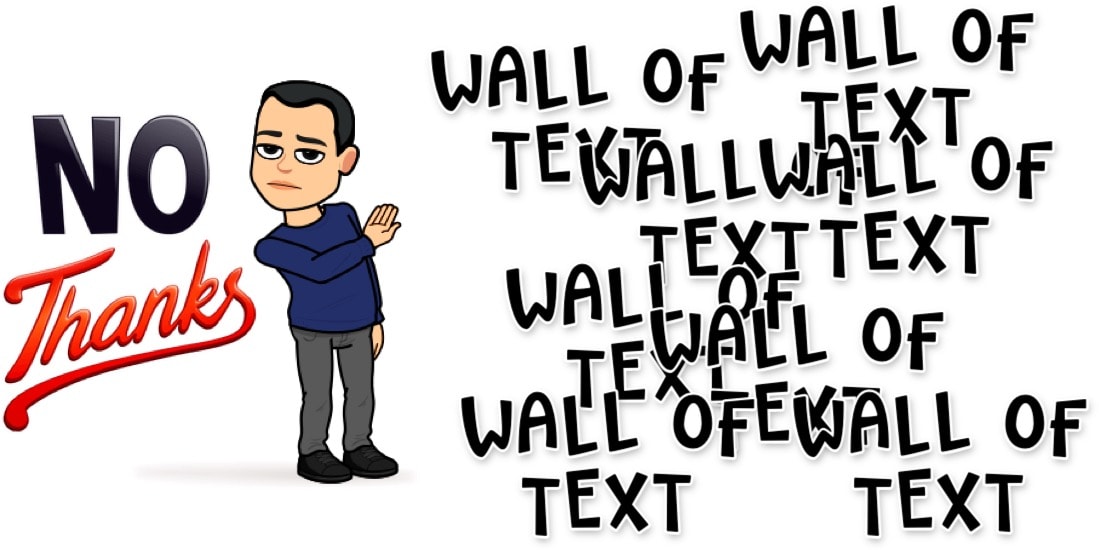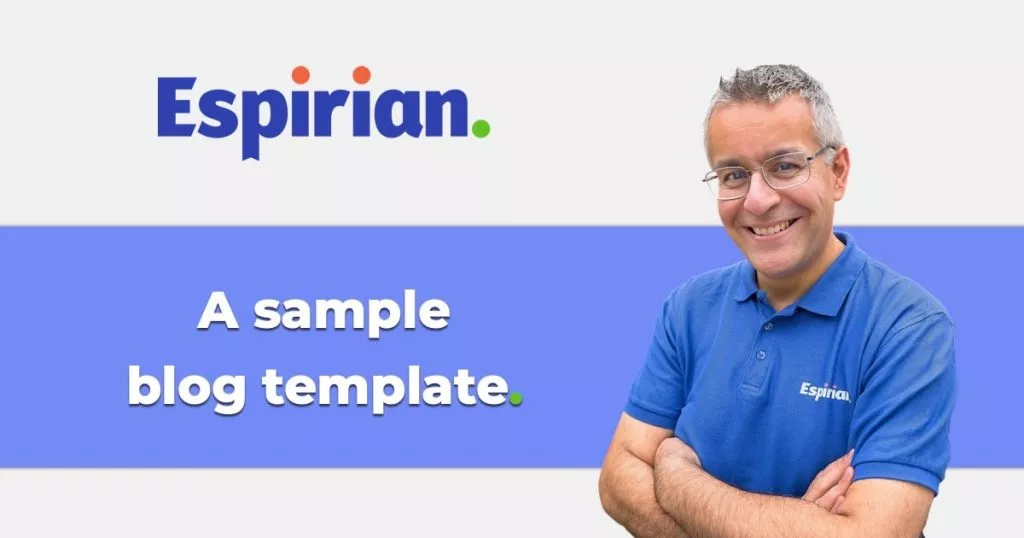Start with a hero image, like the one above. I’ve created a template in Snagit, but you can use Canva if that’s easier.
Take time to get the headline right. It should be clear and relevant to the content in the blog post, with no false promises.
Put the most important terms near the start of the headline. Numbers and dates in headlines can appeal to readers.
Keep your introductory text beneath the headline short. Two or three sentences is enough. If you can summarise the key takeaway of the blog, do so here.
- Use bullet lists as a table of contents
- to set out the headings
- and structure of the post
Use headings to create subsections.
Headings should relate to the bullet list above. Ideally, the bullet list items should be links that jump the reader to the right section of the blog.
Add a relevant image (not a stock photo!) or some other visual device for every subsection.
There should be something to break the walls of text so that you never scroll more than one full screen without seeing something other than text.

Unless you’re writing something complex, you can probably get away with creating three subsections for each blog.
Consider setting a word limit for each subsection – perhaps 200 words will work.
Subheadings should convey the message of the blog.
Readers are lazy, so write subheadings so that readers get value even if that’s all they scan from the piece.
Important points in the body text can be emphasised in bold, but don’t overdo it.
If you can do better than adding images alone, do so. Embedded audio or video can add a lot of value and increase the “dwell time” of the content.
If you do go with three subsections of ~200 words each, and you take into account a short intro and outro, it’s easy to map out the structure of a blog post that will be 800 words long.
Blog posts don’t need to be War and Peace.
Clarity, relevance and distinctiveness matter most. If you can deliver that, the length of your blog posts doesn’t really matter.
If you have a lot to say and are sure that you’ve cut the fluff, there’s no harm in writing a long piece. Check out this post on how long it takes to write a blog.
Respect your reader’s time. If you can summarise the key takeaways near the start of the blog post, they’ll appreciate it.
Include a call to action.
It’s common for blog posts to tail off without the reader being given a clear next step to take.
Your call to action should be a visually distinct message with a button that gets the reader to act.
The whole point of creating content to support your business is to serve your ideal audience with helpful material and then prompt them to take action. Unless you keep that in mind, your content may fail to help you reach your business goals.
You can see my standard call to action below. And you can find out a lot more about good content writing in my book, Content DNA.


